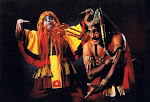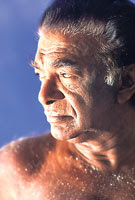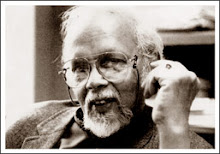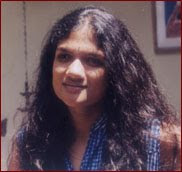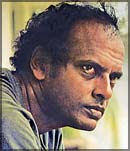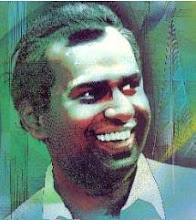When I read the appreciation by my friend Prof. KNO Dharmadasa of Sarachchandra’s Sinhabahu Natakaya, two thoughts crossed my mind. One was whether there was space left for any additional remark, not to speak of a counter point; the second point was why there was no reference, even distantly, to the present day performances of the Natakaya.
A colleague who does research at the library which I visit answered the latter. She said of the theatre, "Today, it is mudalali-business." I agreed with her. Everything is costly these days. So Sinhabahu today is not for the Open Theatre or for the folk of Uda Peradeniya to join in. It has become entertainment for the elite. The post-war saga. Let us see how it is going to be when the new Centre for Performing Arts opens in a few days.
I was happy when I saw Leo Fernando’s short response to KNO’s article in The Island recently. That remark gives me an opening to make some comments. Even in Sarachchandra’s earlier natakaya, Maname, one cannot forget the role played by Charles Silva Gurunnanse of Balapitiya, who was later completely forgotten. No one has recorded this old Nadagam Gurunnanse’s help in transforming Sarachchandra’s work. So, it is Sarachachandra all the way like many other things in Sri Lanka. Gurunnanse was an unhappy man in his later years I was told. I remember that he himself produced a natakaya, a short version as Sarachchandra did. Paragahatota near Ambalangoda which produced these excellent men was an amazing village where one found everything about folk culture. That is a place that should have got into the pages of cultural history of the island. I hope the Southern Provincial Council will do something about it. No one seems to have made a comparative study of Maname Nadagama with Sarachachandras’s Maname Natakaya either, but I remember the University Librarian K. D. Somadasa showing me the manuscript in the Peradeniya University Library.
I wonder whether Sarachchandra meant his natakaya to be an elitist affair. I was not much of a theatre man, not of the Peradeniya school anyway, though in Colombo I spent much time with Sarachchandra assisting him marginally when he was rehearsing Pabavati. I remember the others who helped him likewise. Gunasena Galappatti is no longer with us. Daniel Mutumala, who was in the cast migrated to New Zealand and I do not know the whereabouts of Dingiri Banda, who played the role of Kusa.
I kept away from Sarachchandra after we moved to Peradeniya and started on his new natakaya, Maname. I returned to Colombo once with Sarachchandra in his green Volkswagen for a show of the same play. Pabavati was really a ‘paper and scissors’ job. [Background] singing was done by Amaradeava like in new Sinhalese films of the time. I remember Dingiri Banda just opening his mouth pretending to be singing Kusa’s lament "Sondure…..Sondure// Oba netimata –raja sepakumata- enu ma wetata…." A Pote Guru was introduced as an afterthought. Devar Suryasena was contacted and he willingly accepted the role.
In the village I grew up, nadagams were staged from time to time under the direction of Charles Silva Gurunnanse, who was to later guide Sarachachandra and play the Maddala in his natakayas. It is just as well that Sarachchandra discovered new ‘educated’ talent at the university. That itself, perhaps, helped break new ground with an educated cast. Besides, the village nadagama and other forms of entertainment of the Paragahatota Circle near Ambalangoda during my younger days, there were the pre-Independence plays by the Jayamannas and others enacted with the old Tower Hall cast performed at Laxmi Theatre at Ambalangoda. As a student I remember watching the ‘Colombo Dram Soc’ or ‘Colombo Players’, something like that, rehearsing Shakespeare’s plays at St. Peters College when our Vice Principal Hubert Silva brought us there.
Charles Gurunnanse’s village cast consisted mainly of workers who had had very little education. I recall that a number of cinnamon peelers formed the cast in those nadagams. I could hear them practising their songs. I still recall the man who played the role of Ajatasattu – a swarthy, tall, young man with white teeth turned reddish from chewing beetle leaves. I could not believe when I saw him on the raised open-air stage under the gas lamp dancing, moving from one side to the other in regal movements singing his song. I still remember his mantle adorned with replicas of hooded-cobras which enhanced the character he was playing.
I wonder what difference it would have made to Sarachchandra’s natakayas if their casts had come from grass-root level like that. Perhaps, they would not fit into Sarachchandra’s scheme. KNO or any other scholar has not raised this issue. Hasn’t the average villager been deprived of a source of entertainment by an elitist cultural intrusion? I saw a reverse trend in Communist China, where the Peking Opera was taken to work sites. The fabulous celebrity Mai-Lang-Feng, who played the female role in my days in Beijing, was downgraded by the Red Guards later. In Paris, I followed a course on the French drama and had the opportunity to visit the Opera and other theatres in the Capital and other cities including ‘Punchi theatres’ and earlier, viewing many dozens of Peking Operas during my four year stay in China.
I think I am getting into difficult ground raising the fundamental question: For whom is the theatre meant? Tower Hall plays were for the Colombo middle class. As KNO observes, it was rarely that anyone from the elite class patronized them. Even at Peradeniya when Sarachchandra was rehearsing one of his plays, KNO says one stranger looked through the door of the Arts Theatre in Peradeniyafor a few minutes and said "Sarachchandra, eh" and went away!
KNO speaks of rasikas. They are not the ordinary audience who come to see a play but who come for a deep appreciation. Could they be found among the village folk? I do not consider myself a rasika but I like to share a few thoughts here. I cite three points where, I believe, the emotional content in Sarachchandra’s version is having its peak effect.
Firstly, it is the point where, speaking of attachment of the parents, KNO claims that Sarachchandra has explained in Pin ethi SarasaviVaramak Denne that he drew inspiration for the story from Mahavagga (Vinaya text) about the attachment of the parents (father) to the children (son). That is from Suddhodana’s lament over Siddhartha leaving the household, Nanda’s and Rahula’s ordination by the Buddha without the consent of parents. It seems to me, however, speaking of a parallel between the emotion of paternal attachment in the Mahavagga account and his Sinhabahu story is an exaggeration. I see no parallel beyond the usefulness of the wording Sarachchandra has taken from the Mahavagga account (when expressed in Sinhalese). Even these words come only through Pote Guru and not through the interaction of the characters through their dialogues/songs. Dharmadasa quotes the Pote Guru (in English translation) as follows:
"Love for the child penetrates the muscle; vein and skin
Goes in search of the bones, enters the bones
Rests on the bone marrow and brings eternal pain."
These are, no doubt, emotion–creating words for the local audience. The Pote Guru, in fact, prepares the audience for the events to follow by creating the environment for [enhancing] the emotions.
However, as I see, responses of the animal and Suddhodana represent two different emotional situations. Whether it actually happened like that or not, Suddhodana responds like a cultivated human being whereas the lion displays animal behaviour. There is no space to draw a parallel between the two situations. But, the animal reacts kindly and affectionately when he sees his son forgetting that the latter had come to harm him. These can be seen as ‘character conflicts’ that KNO points to.
In my view, a point that the Bhikkus compiler of the original story in the chronicles intended to infuse into the hearer’s mind was not so much the strength of paternal love even on the part of the brute but the evil consequences of anger; and above it, the consequences of ‘attachment.’ It is only after the brute displays anger and intends to harm him that Sinhabahu’s arrow finally pierces him. But behind all that is the ‘attachment.’ That was the lesson that runs through almost all the chapters in the Mahavamsa accounts. That is the moral in the Chronicler version.
What is important is to see that Sarachchandra is introducing something not so explicitly present in the original text of the chronicles but which a discerning rasika could still come to terms with to some extent in his/her own way reflecting on the son killing the father. There is again a different moral in that original story which the original compiler of the story was introducing. That is the filial duty being superseded by other considerations which the compiler of the chronicle was interested in. That is the story of arrival of royalty in the island. (‘Narindagamanam’ as the Dipavamsa says). Here the ‘Kstriya dharma’ of ‘duty of the kstriya’ dominates over filial duty. One is reminded of Krishna’s advice to Arjuna in Bhagavadgita. Arjuna fights shy of going to war with his kith and kin. Krisna prevails on him saying "It is the duty: thine is the duty" [of the Ksatriya to kill].
Here I see the compiler of the original story being mindful of the "kstriya quality" of the progenitor of the Sinhala race [of readiness to kill] to protect his subjects [as Yuvaraja] rather than upholding the [old] virtue of filial duty. The latter aspect of filial duty remains suppressed not only in the narration of the original story but also subsequently. For example, in the Mahavamsa, later, the same compiler says Sinhabahu became "Sinhala" because he killed the lion" (Sihabahunarindo so sihamadinnavaiti Sihalotenasamb andhaetesabbevasihala (Mahavamsa: 7:42). The situation is much clearer in Dhampiya Atuva Getapadaya, which says: "… helahayanukiseniyath Sihabahu raja sihakumarasihalanamvi. ‘Sihamlunavait’i Sihalo. Vide kumaru e ohudarubevin ‘Sihala’ nam vi….." (How was Sihala derived? King Sinhabahu killed a lion became Sihala. Prince Vijaya got the name Sihala because he was his son).
It is the killing of the lion that is highlighted as a point of ‘valour’. So ‘Sihalas’ are so named not because they are ‘descendants’ of the ‘son’ of the lion but ‘killer’ of the lion. The chronicler also deviates here from the Buddhist ethos about the crime of parricide in preference to the wider Hindu idea of ‘duty’ [of the Kstriya] contained in Bhagavadgita.



